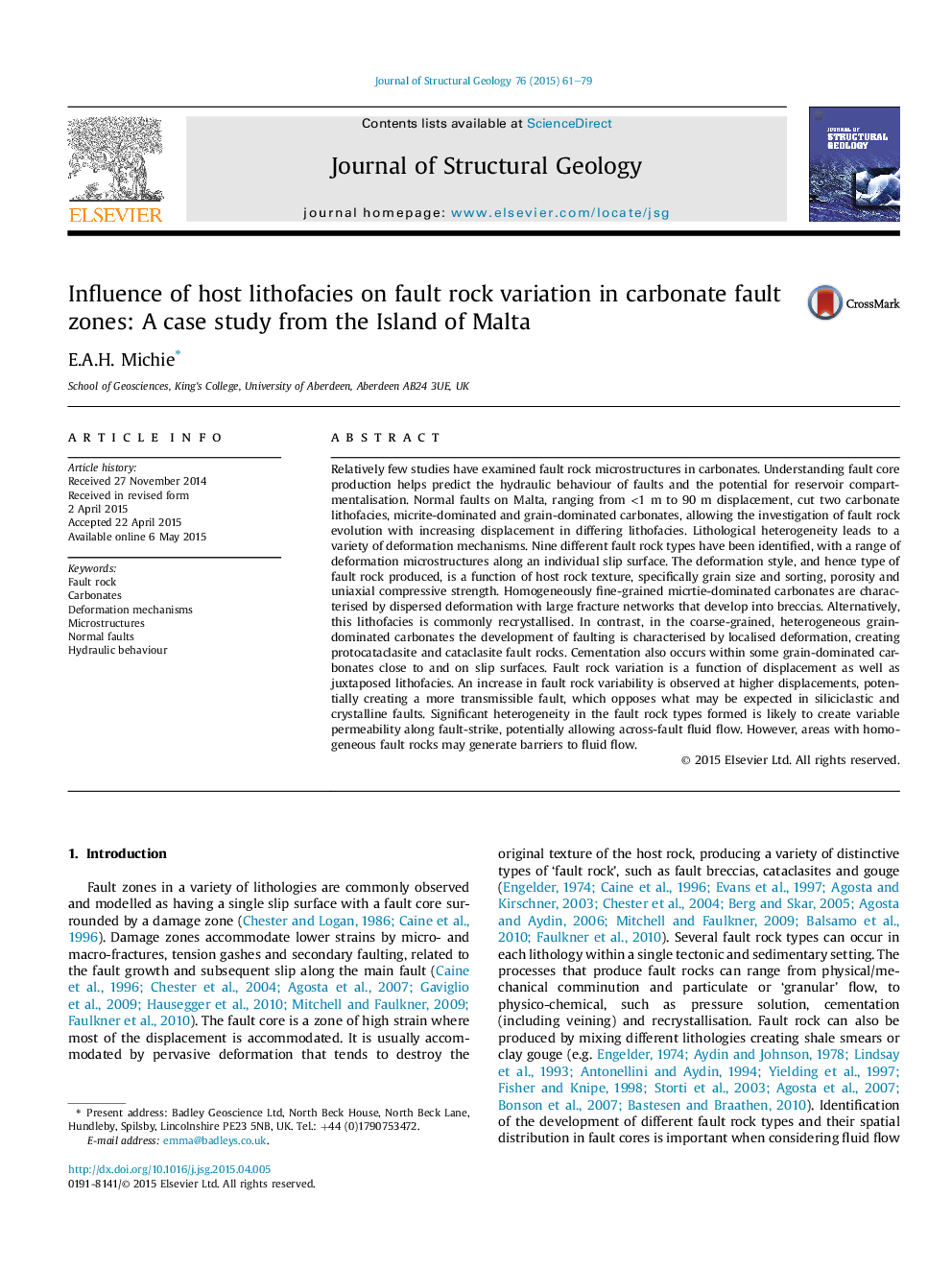| Article ID | Journal | Published Year | Pages | File Type |
|---|---|---|---|---|
| 4733023 | Journal of Structural Geology | 2015 | 19 Pages |
•A range of carbonate fault rock types are introduced.•Discussions are made regarding how each fault rock type evolves.•Fault rocks vary according to the host rock's texture, juxtaposition and displacement.•Predicting the types of fault rock that can occur helps in assessing a fault's sealing potential.
Relatively few studies have examined fault rock microstructures in carbonates. Understanding fault core production helps predict the hydraulic behaviour of faults and the potential for reservoir compartmentalisation. Normal faults on Malta, ranging from <1 m to 90 m displacement, cut two carbonate lithofacies, micrite-dominated and grain-dominated carbonates, allowing the investigation of fault rock evolution with increasing displacement in differing lithofacies. Lithological heterogeneity leads to a variety of deformation mechanisms. Nine different fault rock types have been identified, with a range of deformation microstructures along an individual slip surface. The deformation style, and hence type of fault rock produced, is a function of host rock texture, specifically grain size and sorting, porosity and uniaxial compressive strength. Homogeneously fine-grained micrtie-dominated carbonates are characterised by dispersed deformation with large fracture networks that develop into breccias. Alternatively, this lithofacies is commonly recrystallised. In contrast, in the coarse-grained, heterogeneous grain-dominated carbonates the development of faulting is characterised by localised deformation, creating protocataclasite and cataclasite fault rocks. Cementation also occurs within some grain-dominated carbonates close to and on slip surfaces. Fault rock variation is a function of displacement as well as juxtaposed lithofacies. An increase in fault rock variability is observed at higher displacements, potentially creating a more transmissible fault, which opposes what may be expected in siliciclastic and crystalline faults. Significant heterogeneity in the fault rock types formed is likely to create variable permeability along fault-strike, potentially allowing across-fault fluid flow. However, areas with homogeneous fault rocks may generate barriers to fluid flow.
